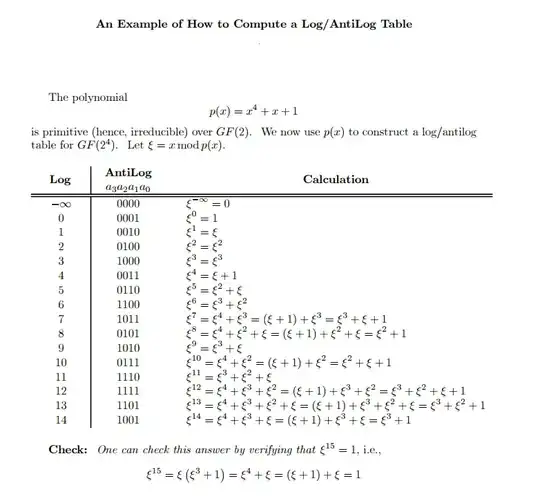I'm learning about finite fields and I came across this example online: http://www.csee.umbc.edu/~lomonaco/s12/443/handouts/Log-Antilog-Calculation.pdf
I'm having trouble understanding what exactly log/antilog tables are used for, and how the calculations are being done in this example. I'm guessing since it's GF(2^4) = GF(16) so there's 16 entries and the highest exponent is 4 which means I have to use at most E^4 in the calculations (I can't get that symbol correctly displayed here, using E for now).
So what exactly are the uses for these tables and how do the calculations work?
Edit: link didn't work, example pic below.
